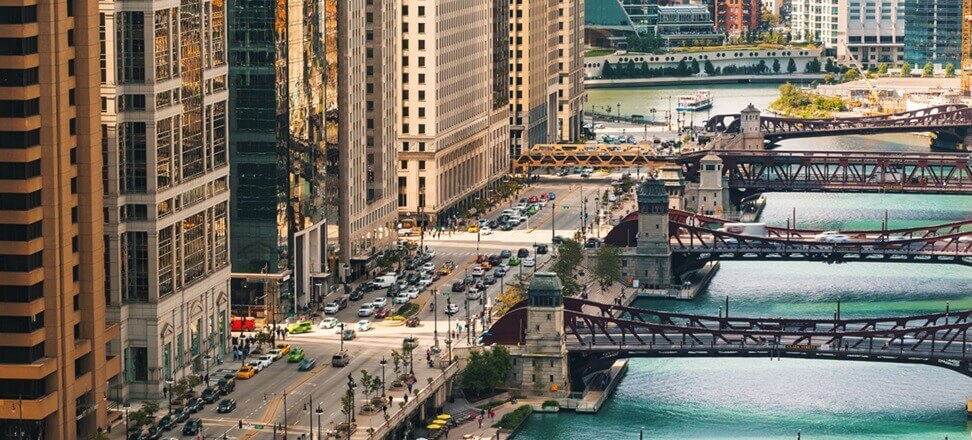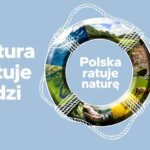A three-year project to restore wetland habitat on nearly 200 acres (about 80 hectares) located in Powderhorn Praire and Marsh Nature Preserve in Chicago has just been completed. We are talking about the Calumet region, known for its heavy industry, which covers the northeastern part of Illinois and the northwestern part of Indiana. The area has previously been notorious for its abysmal air quality and high levels of contamination, earning it the title of the most environmentally devastated area in the entire United States.
Calumet – the most devastated region in the U.S. with tremendous wildlife value
Calumet is a region known for its industrial heritage associated with, among other things. With the production of steel, minerals and chemicals. It was previously one of the most biologically diverse wetlands in all of North America. It is estimated that more than 10,000 existed there before the period of settlement. ha of wetlands. Through the development of urbanization, the amount has dropped to just 250 hectares. Today they form a fragmented mosaic of remnants of natural habitats.
The Calumet region, despite its heavy industrialization and dense population, still remained an extremely valuable natural area. This is due to high habitat diversity, including. dunes, prairies, forests or marshes, as well as species-wise – Calumet is a sanctuary for many endangered plants and animals, including birds. The Great Lakes Basin and surrounding areas with rich ecosystems are not only an important stop during their migrations, but also an important breeding ground. Restoring wetland habitat in the region is therefore of great ecological importance.
Industrial development a cause of loss of habitats valuable not only for nature, but also for security
The Great Lakes, which are a complex of 5 interconnected bodies of water, are the second largest body of fresh water in the world. The site attracted industry and served as a waste receiver for years.
Massive land drainage was a significant interference with water relations, resulting in the degradation of wetlands and localized increases in flooding. The lack of adequate regulations allowed the development of buildings (despite the threat of flooding), resulting in heavy losses when the elements arrived. Maintenance of flood control facilities was also costly. Due to the lack of wetlands, which provide habitat connections between reservoirs, rising water levels in the lakes caused floods, the effects of which were increasingly severe.
Although the area had been the focus of environmentalists’ attention for decades, it was only the massive collapse of local factories that provided the impetus for action. This was the starting point for work to restore wetland habitat. Their scope included a scientific assessment of the potential for ecological restoration, providing a basis for developing a detailed restoration plan.
Renaturalization in Chicago – restoration of wetland habitat
The main goals of the brownfield restoration project in the Southeast Chicago area were to restore wetland habitat, restore natural water levels and reduce the frequency of flooding. The restoration of wetlands in areas connecting individual lakes, which until now – as a result of human activity – have been isolated from each other, is expected to provide continuity that increases the region’s retention capacity and the free movement of organisms.
Critical to biodiversity in the region is the restoration of wetland habitats, where elevated vegetation and open water occur at a ratio of half and half. Project activities included the installation of underground pipes connecting Powerhorn Lake and Wolf Lake to the north, with the aim of restoring the area’s historic water levels. Underwater channels also enhance the movement of fish and other aquatic organisms between reservoirs.
According to officials cutting the ribbon at the project’s crowning ceremony, the project has resulted in the restoration of nearly 78 hectares of wetlands, approx. 200 m of habitat associated with flowing water and more than 18 hectares of native vegetation. The regulation of water levels has only begun the process of restoring the ecosystem, and the full effects will have to wait at least a few years.
Wetland restoration to encourage real estate market and investment in recreational infrastructure expansion
The authors of the project wanted the restoration of wetland habitat to serve both nature and man. A University of Michigan study found that restoration and cleanup efforts in the Great Lakes basin are correlated with an increase in the value of properties located there. Local authorities want to make the area more attractive to residents and hope to increase their numbers. Hence, for example, the buyout of plots of land to convert them into parks and recreational areas, or plans to build luxury housing complexes.

 Polski
Polski






